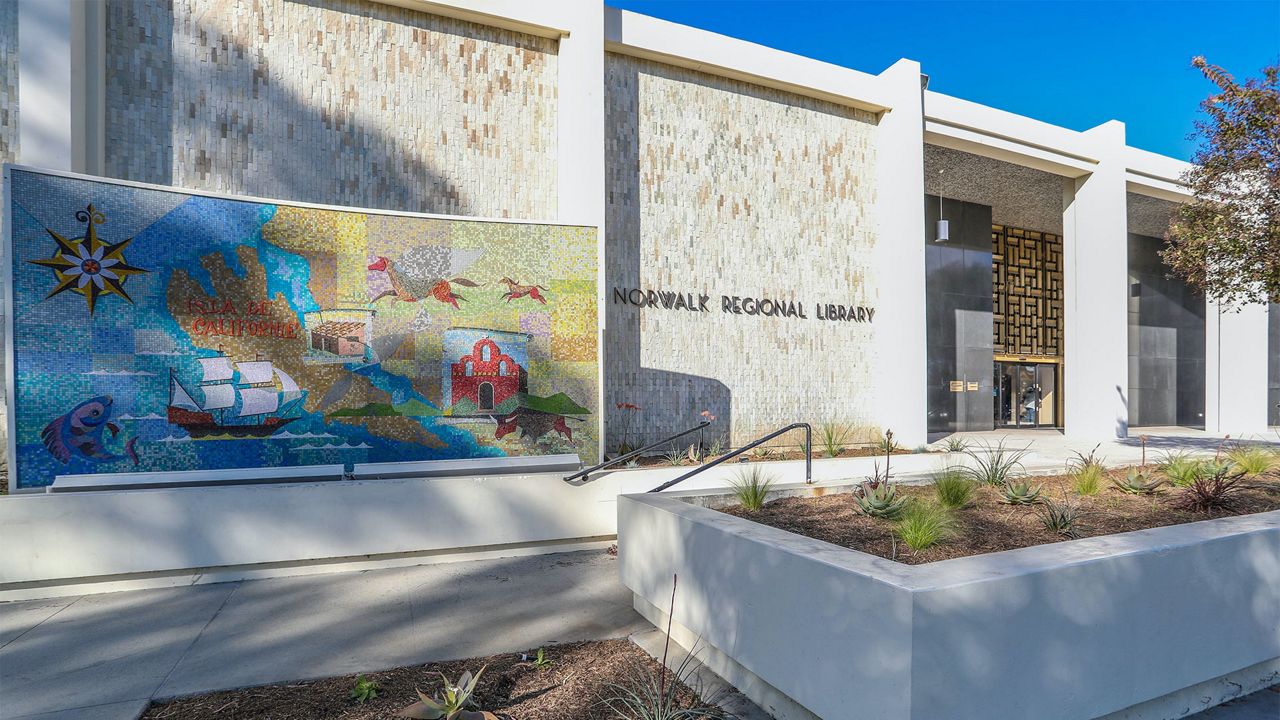LOS ANGELES — During the last year, Imani Tolliver would wake up every morning to explore what she was grateful for each day, whatever it was.
“Whether it was a night without nightmares…or if it was a beautiful day, if the rain was beautiful to witness from inside my home, I would just write down the simple things,” Tolliver said.
Those notes were the Angeleno native’s morning exercise throughout the pandemic — a way to find what she called a “pinprick of hope” in the overwhelming darkness that was the COVID pandemic.
Many of those notes became her entries into the Love Letters in Light project, a program borne of partnership between the Los Angeles County Library and We Rise, LA County Department of Mental Health’s annual mental health awareness month initiative. Throughout the month of May, a total of 310 “brief messages of love” will be displayed at 10 county library locations, one each day at each site.
The public is invited to submit “brief messages of love” — 15 words or less — for potential inclusion in the project; selected letters will receive $150. (Submissions close on May 6.) As of May 2, the project has received more than 900 entries.
Tolliver is one of seven artists and writers selected to write and act as jurists for the program.
“As a poet and an adjudicator, it is really an honor to read the testimonies of people through their poetry and through the prose that some have been submitting,” Tolliver said.
Love Letters in Light was created by Leila Hamidi, who conceived of it as a way for Angelenos to collectively consider what we’ve been through, “so we’re not just expected to go back to our default public life,” she said.
“I think that version has been eroded, and we need to create a new way of being together that corrects some of the fault lines that were exposed during the last year,” she said.
The messages shared thus far on the Love Letters in Light Instagram page, written by the participating jurists, have run the gamut from empowering, to mournful, to hopeful. Taken together, they reflect an ambivalence of emotions, bumping against and roiling atop of one another.
“For me, a vision of hope that doesn’t address the pain is not real. I think that we have to acknowledge that we’ve been through a great deal of suffering that is more than it needed to be, and you can deal with that with a range of emotions,” Hamidi said. “Hope without reckoning doesn’t hold water.”
It’s notable that the project — which began on May 1, using messages written by the team of participating judges — is considered an ephemeral experience. Once the letters are displayed, they’re there for 24 hours before being taken down, and will not be repeated. And while Hamidi hopes that they might be collected, nothing is for certain.
“The technology demands that it be experienced with our body in real space and real time. I’ve learned through the process of installing these that they cannot be captured on a smartphone — it’s like trying to film a TV screen,” Hamidi said.
The love letters are, as such, fleeting; they’re like pollen on a breeze, Tolliver said, looking for a place to land and germinate into something meaningful and lasting.
“I hope that these messages in a bottle will reach people, will connect and will be a source of healing and comfort as we transition into the next phase of this remarkable journey that we’re sharing with the entire world,” Tolliver said.
For more information on the Love Letters in Light project, visit lovelettersinlight.la.
CORRECTION: A previous version of this story incorrectly identified Imani Tolliver's surname. The error has been corrected. (May 5, 2021)
